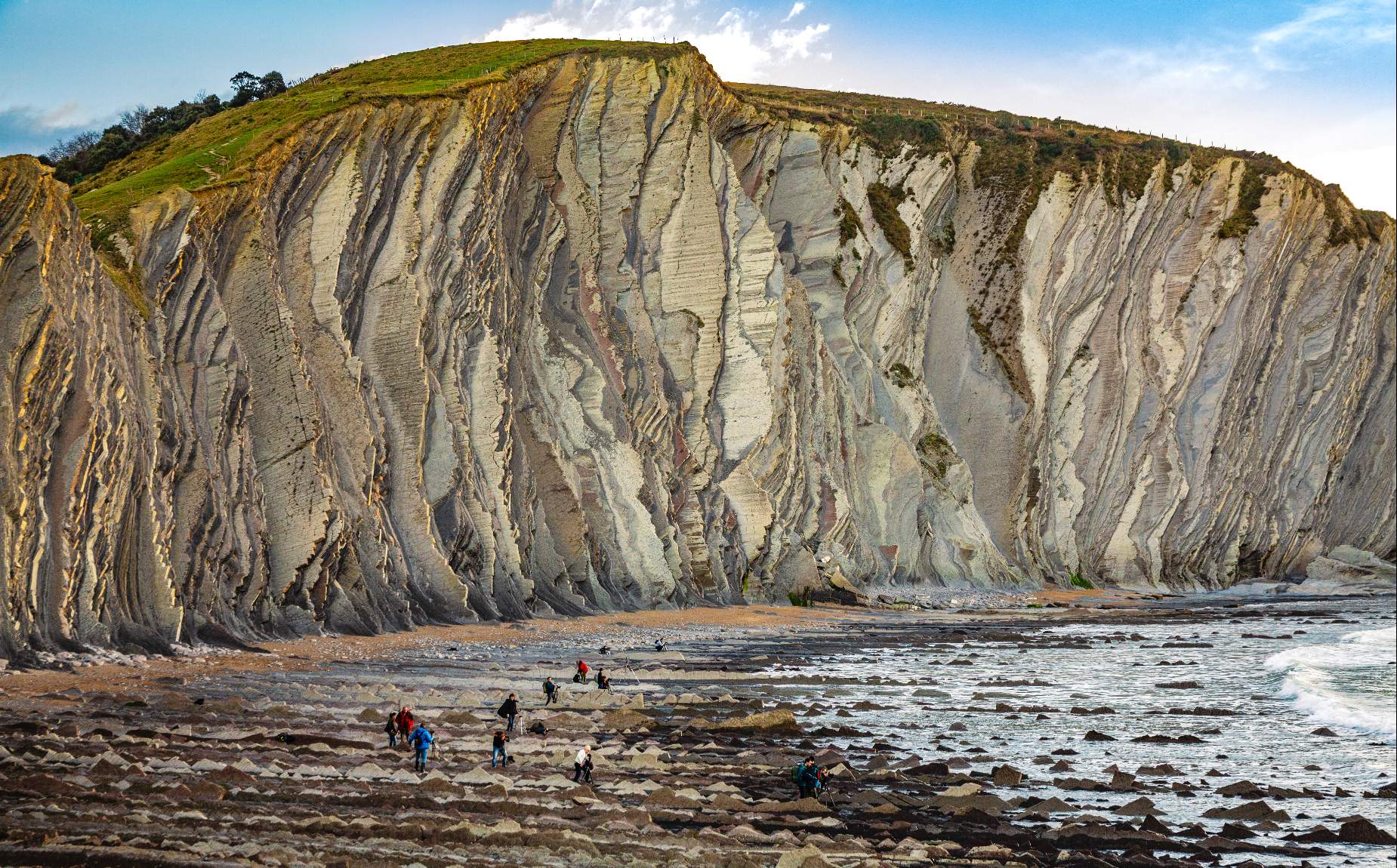The flysch cliffs
The Big Book of Earth History
A fascinating journey through 60 million years of history
These lines serve to invite you to contemplate a very visual geological whim of international relevance, a unique natural landscape that will not leave you indifferent: the impressive flysch cliffs.
To walk along these photogenic cliffs or to see them on board a ship from the sea is like opening and reading the pages of a great book, with its corresponding characters (fossils) and where each rock stratum tells, like a chapter, a little piece of the convulsive history of the Earth.
From rock layers that reveal changes in the Earth's magnetic poles to layers that show evidence of global warming that occurred in the past, the flysch becomes a fascinating journey through time.
How would you feel if we told you that one of the scientific evidences used by experts to support the theory of the extinction of dinosaurs by a meteorite lies in the study of a thin, dark layer located in Zumaia?
Thus, the 13 kilometers of cliffs that stretch along Mutriku, Deba and Zumaia are not only a visual wonder whose pillars we explain on foot and by boat, in a pleasant and simple way to the visitor, but also, due to its easy accessibility, a scientific resource of incalculable value.
In fact, with the aim of continuing to decipher the history written on the rocks, scientists from all over the world continue to carry out research work on our cliffs, since in some cases, understanding the mysteries of the past can provide us with very valuable information to address current problems we face, among others, climate change.




